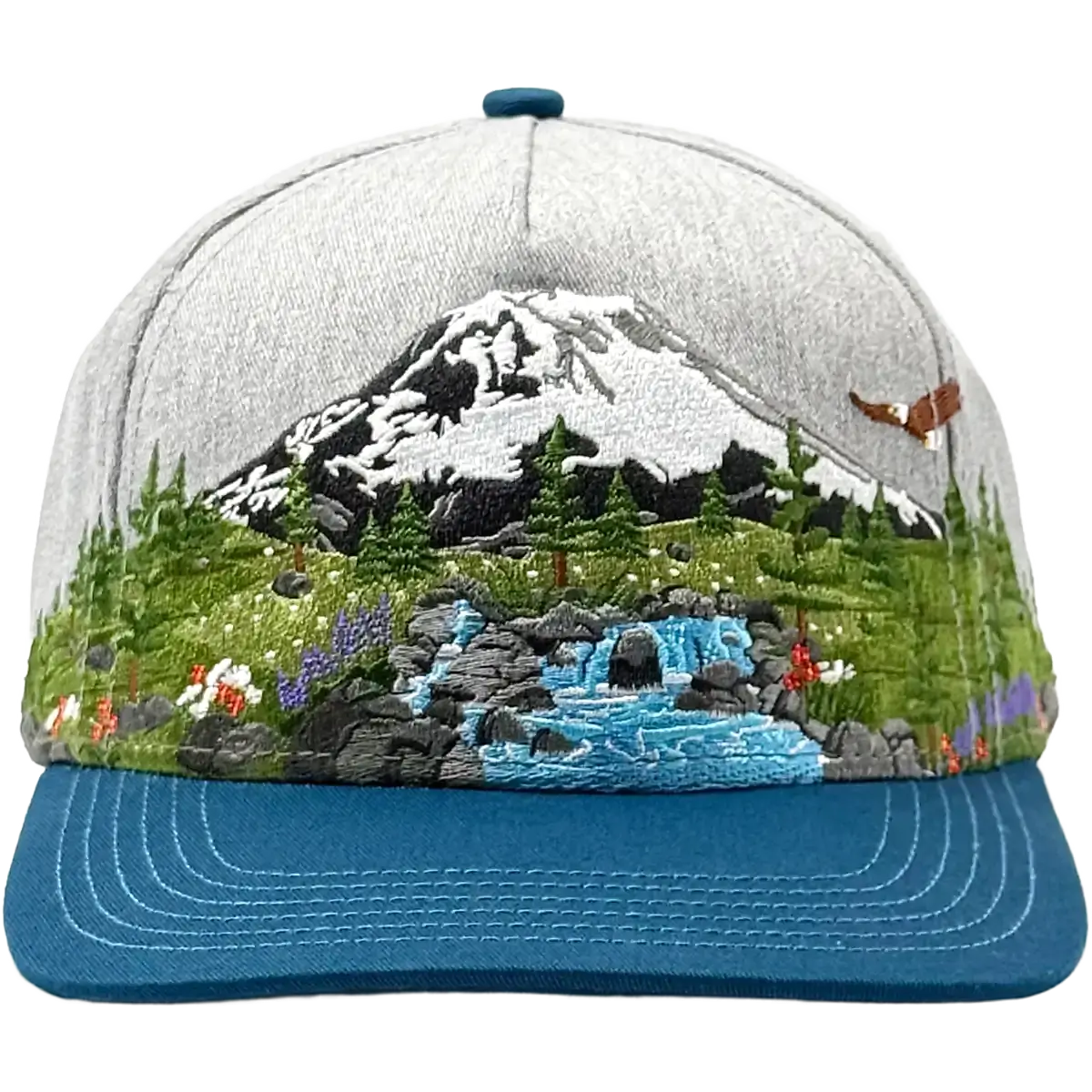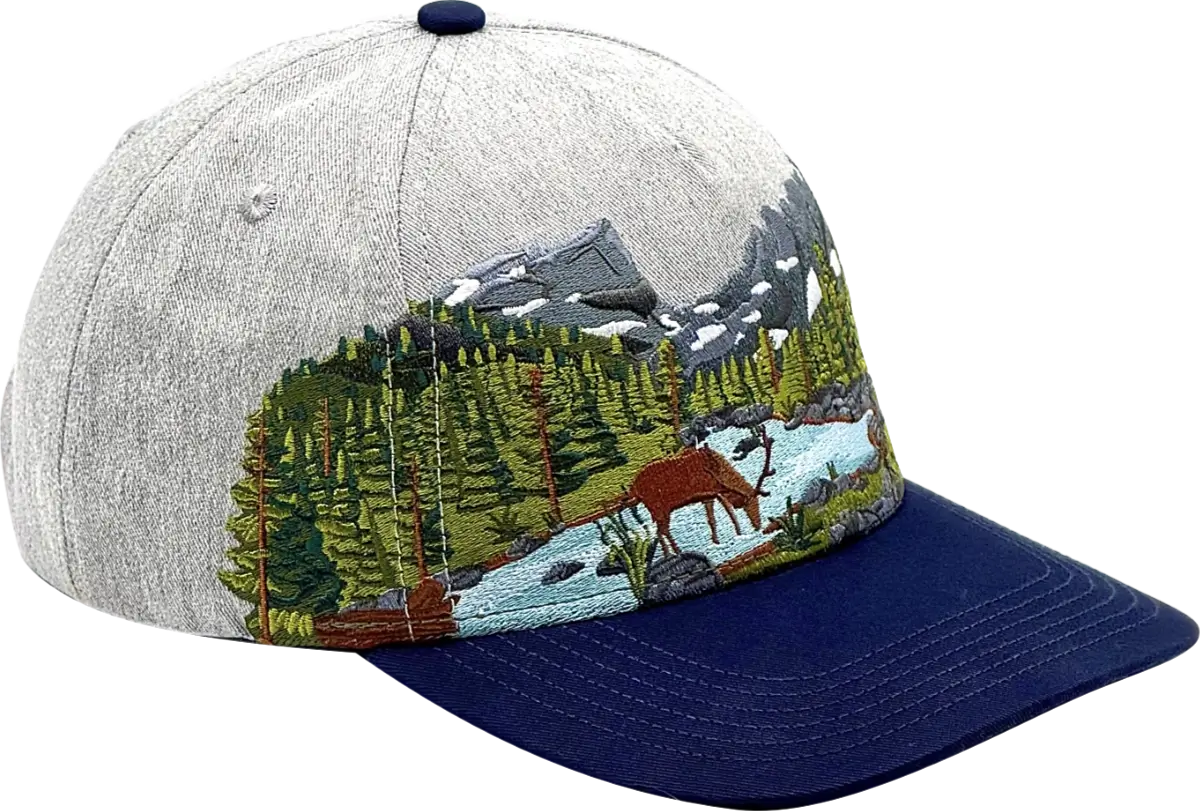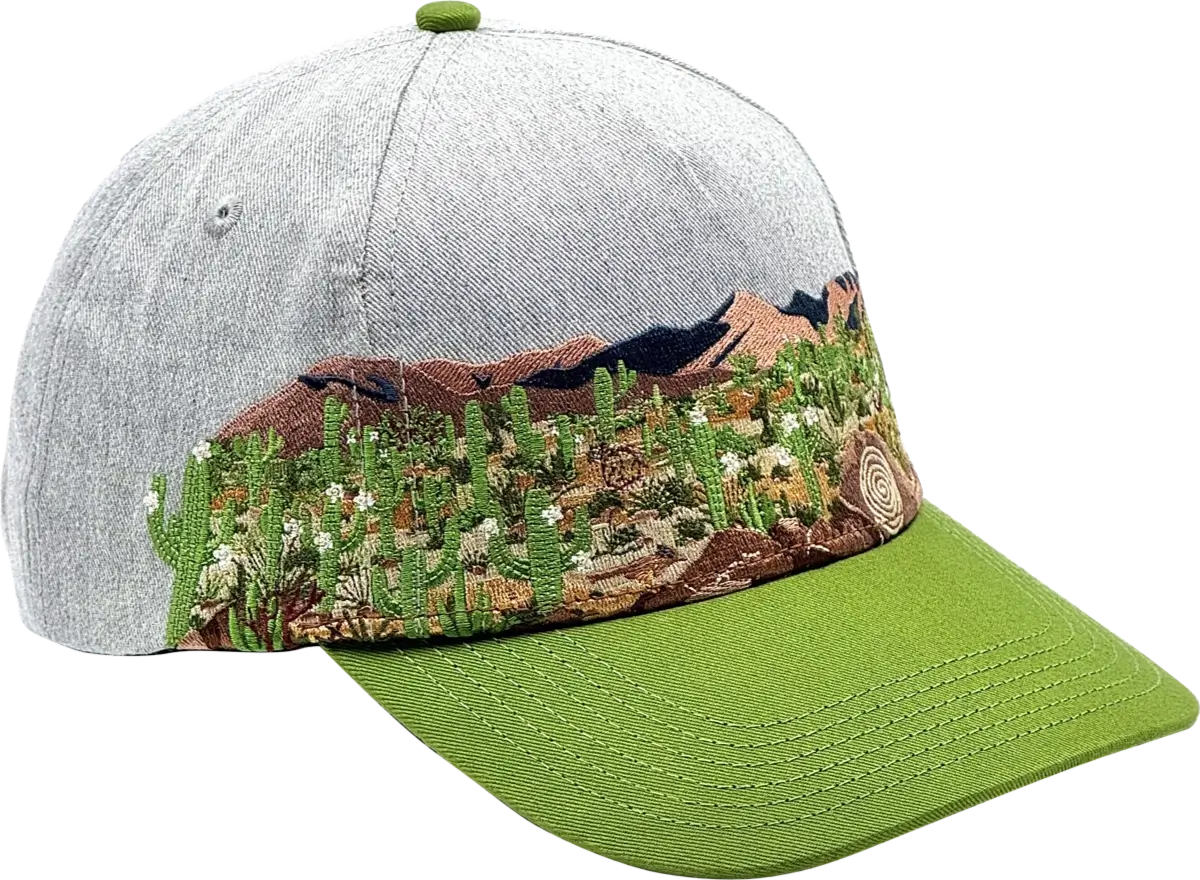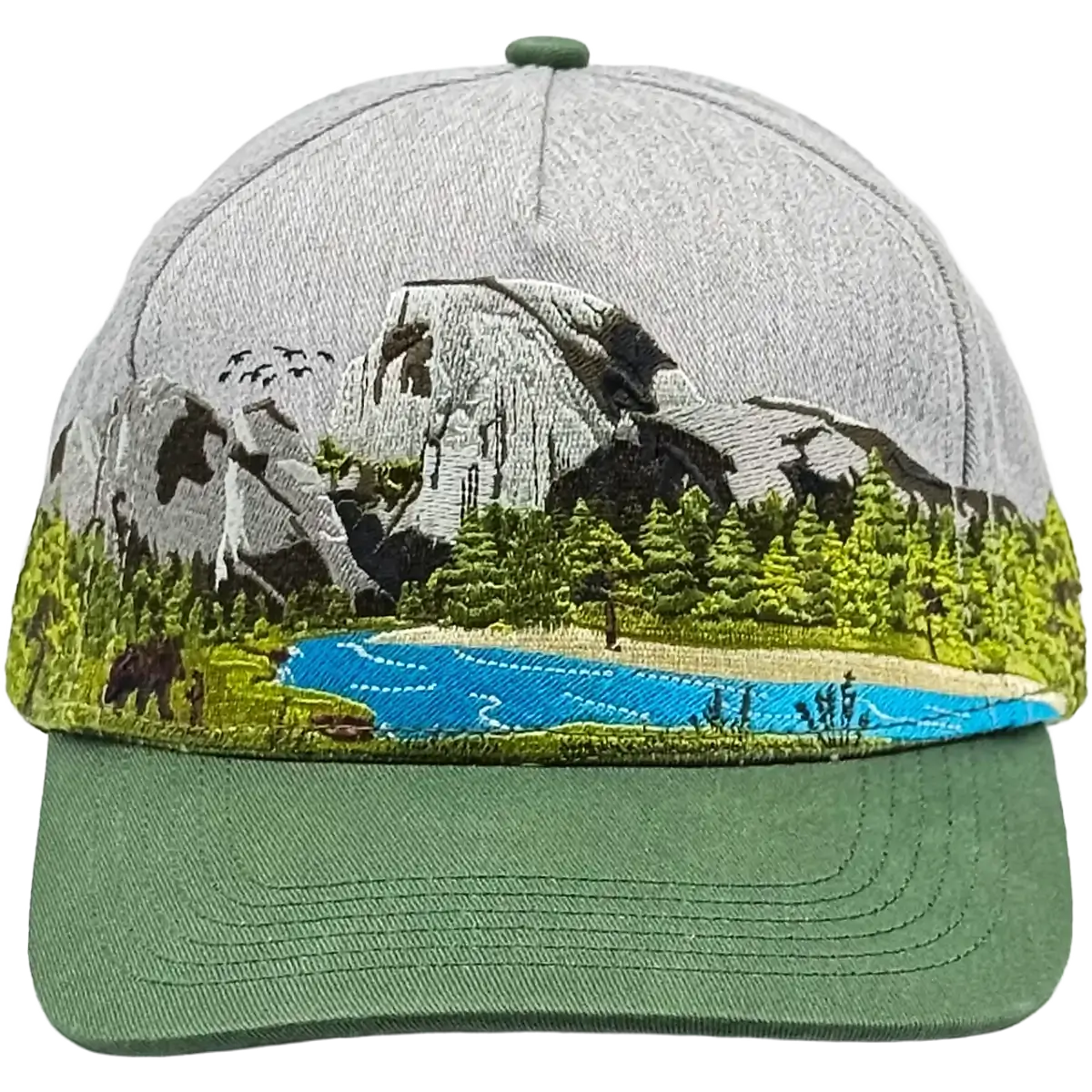Glacier
National Park Hat
Details
- Embroidered panoramic design
- Adjustable snapback hat
- Structured mid-profile 5 panel
- Cotton, handwash
- Free shipping, free returns
- 100% of profits donated to National Parks
Our Mission
I'm Ian - from Seattle, and at Rainier Hat Co. we're dedicated to giving back to the places that inspire us every day. From the glaciers of Mount Rainier to the grand prismatic springs of Yellowstone, our national parks are treasures that deserve our support.
That's why we've made a commitment that goes beyond the norm: donating all our profits to these natural sanctuaries. It's not just about creating high-quality (and awesome) hats inspired by the beauty of the outdoors, it's about contributing to the preservation of these areas for future generations to enjoy.
Glacier National Park Hat Inspiration
The inspiration for this Glacier National Park hat comes from the Wild Goose Island overlook right off the Going to the Sun road. Located along the eastern portion of the Going to the Sun Road just west of the St. Mary entrance, the overlook sits above St. Mary Lake and looks out toward a small forested island in the center of the water with mountains rising on all sides. Visitors can pull off the main road and walk a short distance to several viewing spots with no hiking required.
From here you can see several prominent peaks including Red Eagle Mountain to the right and Dusty Star Mountain to the left. Typically cold and clear, when conditions are calm the lake may reflect the surrounding landscape and the sky can shift quickly due to changing weather and wind is common especially in the afternoons. The scene varies by season with snow remaining on the peaks well into early summer and fall colors appearing briefly in late September.
The island itself is small and covered in trees and while it looks close it is not accessible to the public. This viewpoint is one of the most frequently photographed spots in the park due to its easy access and central location.
Design Process
Creating these National Park hats with their panoramic embroidery is a detailed process going beyond simply buying and reselling bulk designs. There are no logos and no branding on any of our hats, just National Parks, from a small company in Seattle, Washington.
The first step is having gone to every park we feature, and we have! We try to find that specific viewpoint in the park to show off and what we need to do to capture the feeling of being there. Sometimes we ad-lib a bit of the design to include other elements to capture the feeling of the park as a whole, but we try hard to highlight an actual place in the park you can visit.
Then we get to designing! Embroidery is naturally limited in colors and we use a 15 color (the most you'll find) edgeless embroidery process which takes upwards of 90 minutes and over 60,000 stitches per hat, but allows us to show off every detail from that epic mountain range to the colorful flowers in your favorite park.
Finally the design get digitized for embroidery, a sample is made for any final tweaks, and we go to production getting these fantastic hats on your heads.
And 100% of our profits are donated right back to our National Parks .
Visit the Inspiration
To reach the Wild Goose Island overlook located along the Going to the Sun Road in the St. Mary Valley, enter Glacier National Park through the St. Mary Entrance on the east side of the park. From the entrance, follow Going to the Sun Road west for approximately 6.5 miles. The overlook is marked with a small pullout on the south side of the road with space for parking and interpretive signs.
The overlook provides a clear view of Wild Goose Island in the middle of St. Mary Lake framed by the surrounding peaks of the Lewis Range. This is one of the most photographed locations in the park and is accessible without hiking. Early morning and evening offer the best lighting conditions, and the area can be windy, especially later in the day. Parking is limited and can fill quickly during peak hours.
Going to the Sun Road typically opens in late June or early July depending on snow conditions and remains open until mid fall. Vehicle reservations are required to access this section of the park during the summer season, and entrance fees still apply.
Glacier National Park
Glacier National Park is located in northwestern Montana along the Canadian border. It was established in 1910 and covers over one million acres of mountains lakes valleys and forest. The park includes parts of the Rocky Mountains and contains over two dozen named glaciers most of which are shrinking due to climate change. Much of the park is designated wilderness with limited development and a focus on preserving natural conditions.
The main road through the park is the Going to the Sun Road which runs roughly 50 miles from the west entrance near West Glacier to the east entrance near St. Mary. This route crosses the Continental Divide at Logan Pass and provides access to alpine meadows waterfalls and high elevation views. The road usually opens in late June or early July depending on snow conditions and stays open until mid fall. Vehicle reservations are required to access this corridor during peak summer months.
Popular hiking areas include the Highline Trail Grinnell Glacier Trail and Avalanche Lake each offering views of lakes glaciers and surrounding peaks. Wildlife such as mountain goats bighorn sheep and bears are commonly seen along trails and roadsides. Visitors are encouraged to carry bear spray hike in groups and follow food storage guidelines. Trail conditions can change quickly due to weather and snowfields may persist at higher elevations well into summer.
The park also offers opportunities for boating fishing and scenic driving. St. Mary Lake and Lake McDonald are accessible by road and are popular for kayaking canoeing and photography. No fishing license is required within park boundaries but there are specific rules for different bodies of water to protect native fish species. Many campgrounds are available by reservation during peak season while others operate on a first come first served basis.
Glacier shares a border with Waterton Lakes National Park in Canada and together they form the Waterton Glacier International Peace Park. This is the first park of its kind and represents a cooperative effort to protect shared ecosystems across national borders.
Most Popular Hikes
Highline Trail
Starting at Logan Pass, this iconic trail follows a narrow ledge above the Going to the Sun Road with sweeping views of the valley and surrounding peaks. The full route to The Loop is long but can be shortened with an out-and-back to Haystack Pass. Mountain goats and marmots are frequently seen along the way.
Grinnell Glacier Trail
This trail climbs steadily from the Many Glacier area to a stunning view of Grinnell Glacier and Upper Grinnell Lake. Along the way, hikers pass alpine lakes and may spot moose or bears in the valley. The final ascent includes exposed sections and seasonal snowfields.
Avalanche Lake via Trail of the Cedars
This popular trail starts on a wheelchair accessible boardwalk through old growth forest before continuing up to Avalanche Lake. The lake is surrounded by steep cliffs and waterfalls, making it a scenic destination. It’s a great option for families and casual hikers looking for a manageable half day hike.
Hidden Lake Overlook
Beginning at Logan Pass, this short hike climbs through alpine meadows with frequent wildlife sightings including mountain goats and bighorn sheep. The trail ends at a viewpoint above Hidden Lake with expansive views of Bearhat Mountain. Snow often remains on the trail through mid-summer.
Iceberg Lake Trail
Starting from the Swiftcurrent area, this trail passes open meadows and dense forest before reaching the turquoise waters of Iceberg Lake. Icebergs often float in the lake well into summer, giving the hike its name. It’s one of the most scenic hikes in the Many Glacier region.
Going to the Sun Road
Going to the Sun Road is the main scenic drive through Glacier National Park. Stretching almost 50 miles from the west entrance near West Glacier to the east entrance at St. Mary, the road crosses the Continental Divide at Logan Pass and climbs to over 6,600 feet in elevation. It is the only road that travels fully through the park’s interior and provides access to many of its most well known features.
Completed in 1932 after nearly two decades of planning and construction, it was designed to follow the natural contours of the landscape with minimal impact on the environment. Engineers used stone retaining walls and narrow switchbacks to navigate steep terrain and today the road is listed as a National Historic Civil Engineering Landmark and remains a significant part of the park’s history.
Along the route visitors can see alpine meadows waterfalls glacial valleys and high mountain peaks with notable stops include Lake McDonald, Avalanche Creek, Logan Pass, St. Mary Lake, and Wild Goose Island. Wildlife such as mountain goats, marmots, and bighorn sheep are commonly seen near the road especially in the high country with pullouts and overlooks allow for photography and short walks without leaving the roadway.
Snow and weather conditions affect access and the road typically opens in late June or early July and closes by mid October. Plowing the upper sections can take several weeks due to heavy snowpack and avalanche risk. The road is narrow with sharp turns and steep drop offs and vehicle size restrictions are in place for safety. Bicycles are permitted but are subject to time and location restrictions during the summer season.
Going to the Sun Road provides a direct way to experience the park’s diverse terrain in a single drive. While many areas are visible from the vehicle some trailheads and visitor centers along the road offer deeper access on foot. Interpretive signs and exhibits provide information about geology wildlife and park history. The road remains one of the most visited features in Glacier National Park and is central to most visitor experiences.
Wild Goose Island
Wild Goose Island is located in the middle of St. Mary Lake on the east side of Glacier National Park. The island is small and tree covered and sits just offshore from a roadside overlook along Going to the Sun Road. It is one of the most recognized views in the park and is often photographed at sunrise and sunset. The overlook is easy to access and provides an open view of the lake with mountain peaks rising on all sides.
The lake stretches for about 10 miles and is the second largest in the park. The water is clear and cold and the shoreline is mostly undeveloped. The island breaks up the center of the lake and adds depth to the view which faces west toward the Continental Divide. When the wind is calm the surrounding peaks are sometimes reflected on the lake surface.
From the overlook visitors can see Dusty Star Mountain to the left and Red Eagle Mountain to the right. Other visible peaks include Reynolds Mountain and Going to the Sun Mountain farther west along the lake. Snow can linger on the upper slopes into July and fall colors appear briefly in September. The scene is framed by dense subalpine forest and rocky outcrops.
Wild Goose Island is not accessible to the public and boats are not allowed to land there. The island itself is small and covered in trees and shrubs that provide habitat for birds and other small animals. Its location in the center of the lake makes it a prominent feature from several points along the road but the main overlook offers the clearest view. Interpretive signs at the pullout provide background on the landscape and its significance.
This area of the park is part of the St. Mary Valley which marks the transition from prairie to mountain terrain. Wildlife such as deer black bears and bighorn sheep are sometimes seen in the area especially early in the morning. The valley is also home to a mix of lodgepole pine subalpine fir and aspen trees. Wildfires have burned sections of the valley in recent decades and signs of recovery are visible along the road.






